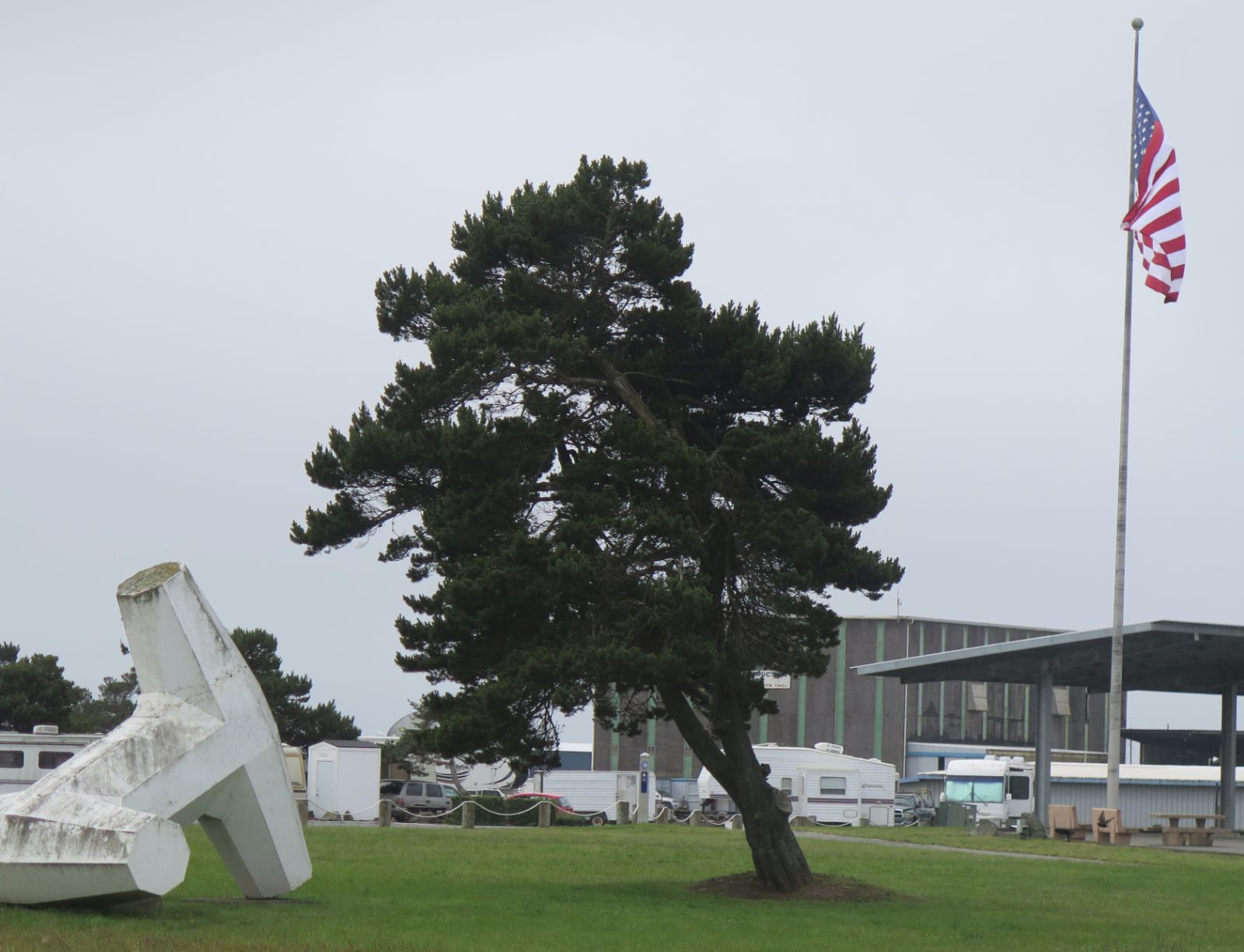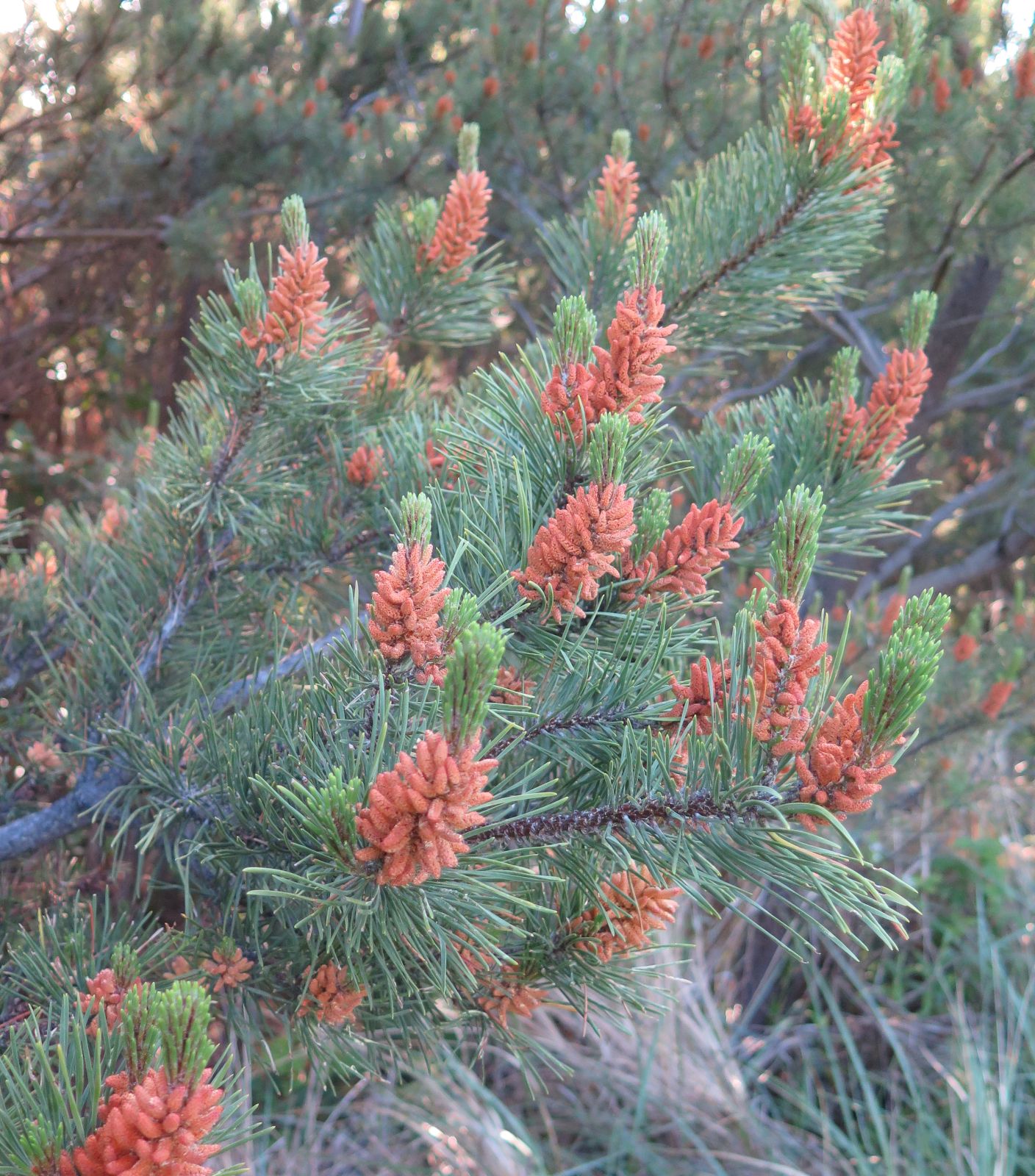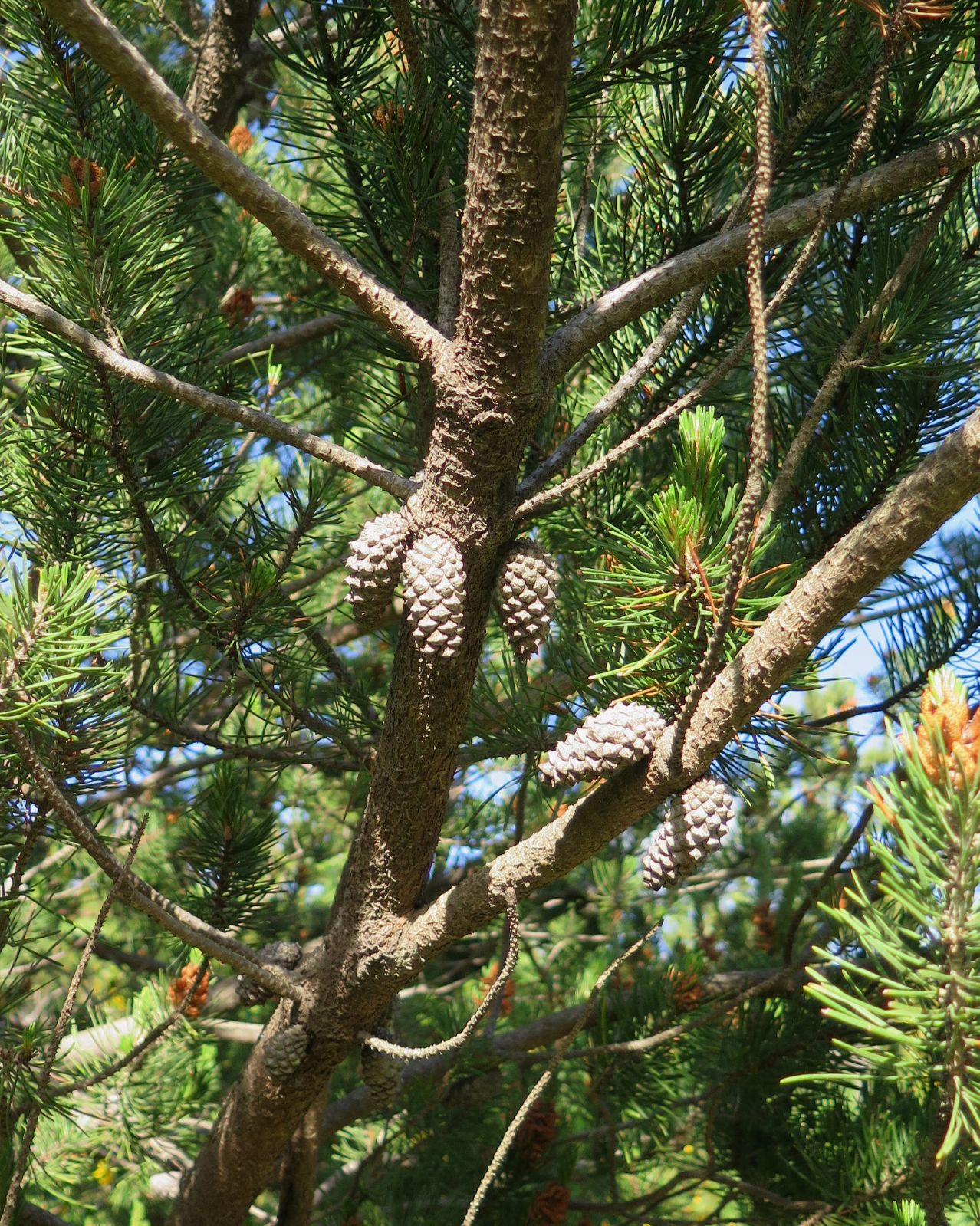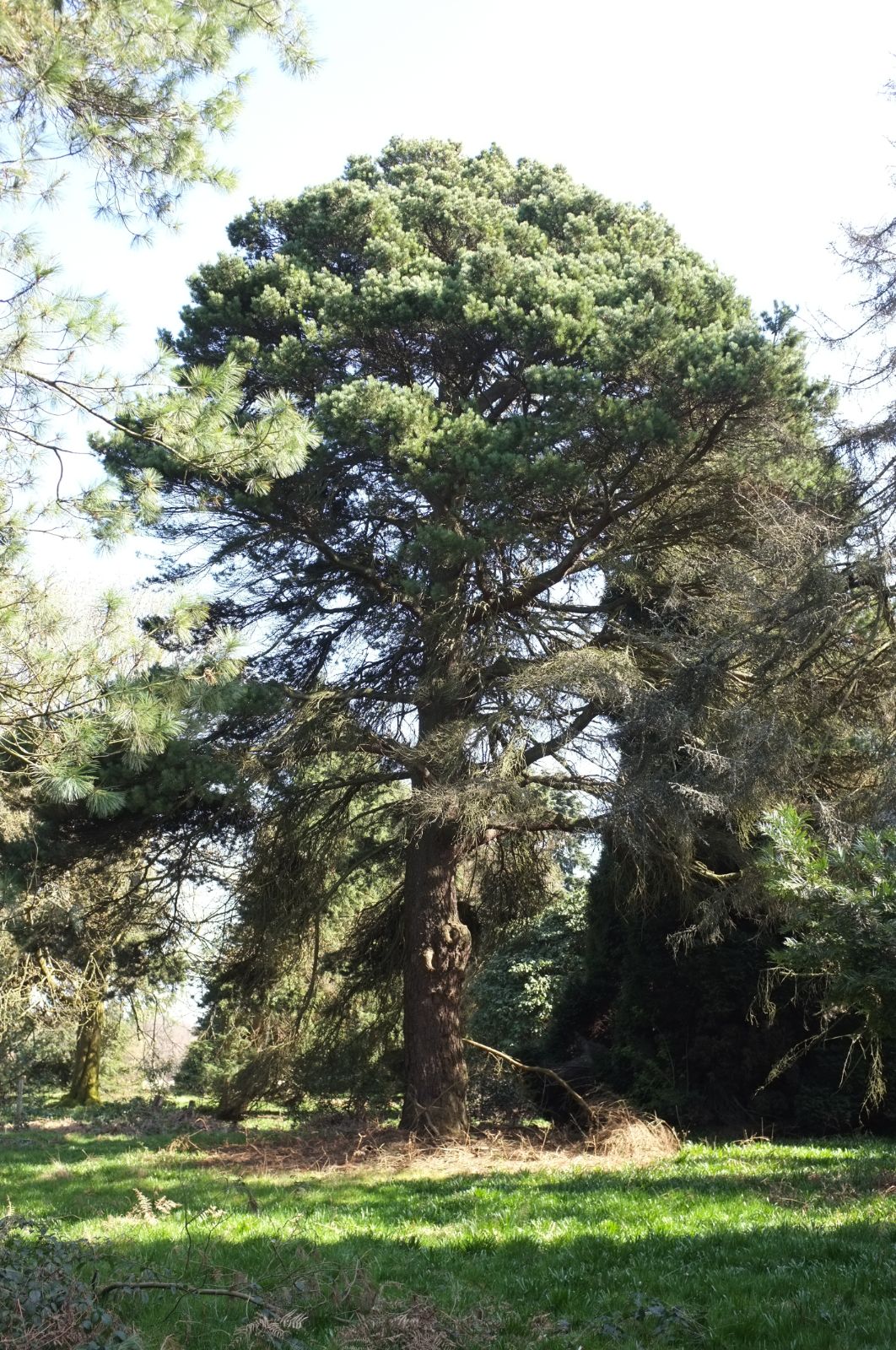Pinus contorta
Credits
Article from Bean's Trees and Shrubs Hardy in the British Isles
Recommended citation
'Pinus contorta' from the website Trees and Shrubs Online (treesandshrubsonline.
Genus
Common Names
- Beach Pine
Infraspecifics
Other taxa in genus
- Pinus albicaulis
- Pinus arizonica
- Pinus armandii
- Pinus attenuata
- Pinus ayacahuite
- Pinus balfouriana
- Pinus banksiana
- Pinus bhutanica
- Pinus brutia
- Pinus bungeana
- Pinus canariensis
- Pinus cembra
- Pinus cembroides
- Pinus chiapensis
- Pinus coulteri
- Pinus culminicola
- Pinus densata
- Pinus densiflora
- Pinus devoniana
- Pinus durangensis
- Pinus echinata
- Pinus edulis
- Pinus elliottii
- Pinus engelmannii
- Pinus eremitana
- Pinus flexilis
- Pinus gerardiana
- Pinus greggii
- Pinus × hakkodensis
- Pinus halepensis
- Pinus hartwegii
- Pinus heldreichii
- Pinus henryi
- Pinus × holfordiana
- Pinus hwangshanensis
- Pinus jeffreyi
- Pinus johannis
- Pinus koraiensis
- Pinus lambertiana
- Pinus leiophylla
- Pinus longaeva
- Pinus massoniana
- Pinus maximartinezii
- Pinus monophylla
- Pinus montezumae
- Pinus monticola
- Pinus morrisonicola
- Pinus mugo
- Pinus muricata
- Pinus nelsonii
- Pinus nigra
- Pinus oocarpa
- Pinus orizabensis
- Pinus palustris
- Pinus parviflora
- Pinus patula
- Pinus peuce
- Pinus pinaster
- Pinus pinceana
- Pinus pinea
- Pinus ponderosa
- Pinus pseudostrobus
- Pinus pumila
- Pinus pungens
- Pinus quadrifolia
- Pinus radiata
- Pinus remota
- Pinus resinosa
- Pinus rigida
- Pinus roxburghii
- Pinus sabiniana
- Pinus serotina
- Pinus sibirica
- Pinus strobiformis
- Pinus strobus
- Pinus sylvestris
- Pinus tabuliformis
- Pinus taeda
- Pinus taiwanensis
- Pinus teocote
- Pinus thunbergii
- Pinus torreyana
- Pinus virginiana
- Pinus wallichiana
- Pinus wangii
- Pinus yunnanensis
A tree 20 to 30 ft in the wild, but taller in cultivation; bark of mature trees thick, roughly fissured; young shoots often curiously twisted, glabrous; terminal buds narrowly cylindrical, 3⁄4 to 1 in. long, resinous. Leaves in pairs, 11⁄2 to 21⁄4 in. long, 1⁄12 in. or less wide, dark green, persisting three, four, or more years; leaf-sheath 3⁄16 in. long, persistent. Cones obliquely conical, up to 2 in. long, 3⁄4 in. wide at the base before expanding; scales terminated by a slender spine which wears away in time.
Native of the coast region of western N. America, from Alaska to S. California; discovered by Douglas in 1825; introduced shortly before 1855. It belongs to the group of two-leaved pines with persistent leaf-sheaths, and cylindrical, resinous winter-buds. In the absence of cones it might be confused with the mountain pine of Europe, P. uncinata, but in that species the leaves persist for five to ten years and the leaf-sheath is longer – up to 5⁄8 in. long.
In recent years P. contorta has become an important forestry tree in Britain, especially as a pioneer tree on poor peaty soils. Among the largest specimens in collections are: Grayswood Hill, Haslemere, Surrey, pl. 1886, 66 × 83⁄4 ft (1971); Warnham Court, Sussex, 73 × 91⁄4 ft (1971); Westonbirt, Glos., in Broad Drive, 61 × 9 ft (1970); Bodnant, Denb., pl. 1876, 105 × 93⁄4 ft (1974); Ashford Castle, Co. Mayo, Eire, 88 × 121⁄4 ft (1966).
P. contorta, in the wide sense, is a very variable species and there is no unanimity as to how it should be subdivided. The two varieties treated below are not clearly demarcated and are themselves variable. The complex is discussed by W. B. Critchfield in Geographic Variation in Pinus contorta (Maria Moors Cabot Foundation Publ. Vol. 3, 1–118 (1957)).
From the Supplement (Vol. V)
specimens: Grayswood Hill, Haslemere, Surrey, pl. 1876, this tree has been removed; Warnham Court, Sussex, 82 × 91⁄2 ft (1983); St Clere, Kent, 60 × 8 ft (1983); Bowood, Wilts., 79 × 8 ft and 77 × 81⁄4 ft (1984); Westonbirt, Glos., Broad Drive, 66 × 91⁄2 ft (1982); Bodnant, Gwyn., pl. 1876, this tree was blown down 1974; Castle Milk, Dumfr., 80 × 71⁄2 ft (1984).
var. latifolia – specimens: Dropmore, Bucks., 84 × 6 ft (1982); Leonardslee, Sussex, 92 × 51⁄2 ft (1984); Westonbirt, Glos., Pool. pl. 1875, 82 × 8 ft (1979); Bodnant, Gwyn., 67 × 61⁄2 ft (1981); Culcreuch Castle, Stirlings., 94 × 7 ft (1984).
† cv. ‘Frisian Gold’. – Young foliage becoming a striking gold, most intense during the winter. Low, spreading habit, at least when young. This arose as a mutation in the nursery of J. D. zu Jeddeloh, Germany, around 1962, and was named in 1979.
var. latifolia S. Wats.
Common Names
Lodgepole Pine
Synonyms
P. murrayana and P. contorta var. murrayana of most authors, in part
P. contorta subsp. latifolia (S. Wats.) Critchfield
From typical P. contorta this variety can be distinguished by the thin bark of its trunk (rarely more than {1/4} in. thick) of a pale grey or brown, covered with thin scales, but comparatively smooth; also by its longer, yellowish green leaves; the leaves also tend to be rather wider, but the difference is not marked or consistent enough to be of much value in identification. The tree itself attains to a considerably greater height than typical P. contorta and, compared with var. murrayana, the trunk is slender, rarely more than 1 ft in diameter in trees a century old. It is a closed-cone pine, shedding only a small proportion of its seed each year. The bulk of the cones remain closed on the tree for a considerable period, but release their seed in vast quantities after a forest fire. In this way it quickly colonises the devastated area and dense, even-aged stands grow up.Whereas typical P. contorta inhabits the coastal region, the var. latifolia is a native of the Rocky Mountains, ranging from W. Alaska to Colorado, and ascending to 11,000 ft at the southern end of its range (to 6,000 ft in British Columbia). It was introduced shortly before 1855.
var. murrayana (Balf.) Engelm.
Synonyms
P. murrayana Balf.
P. contorta subsp. murrayana (Balf.) Critchfield
P. tamrac A. Murr













